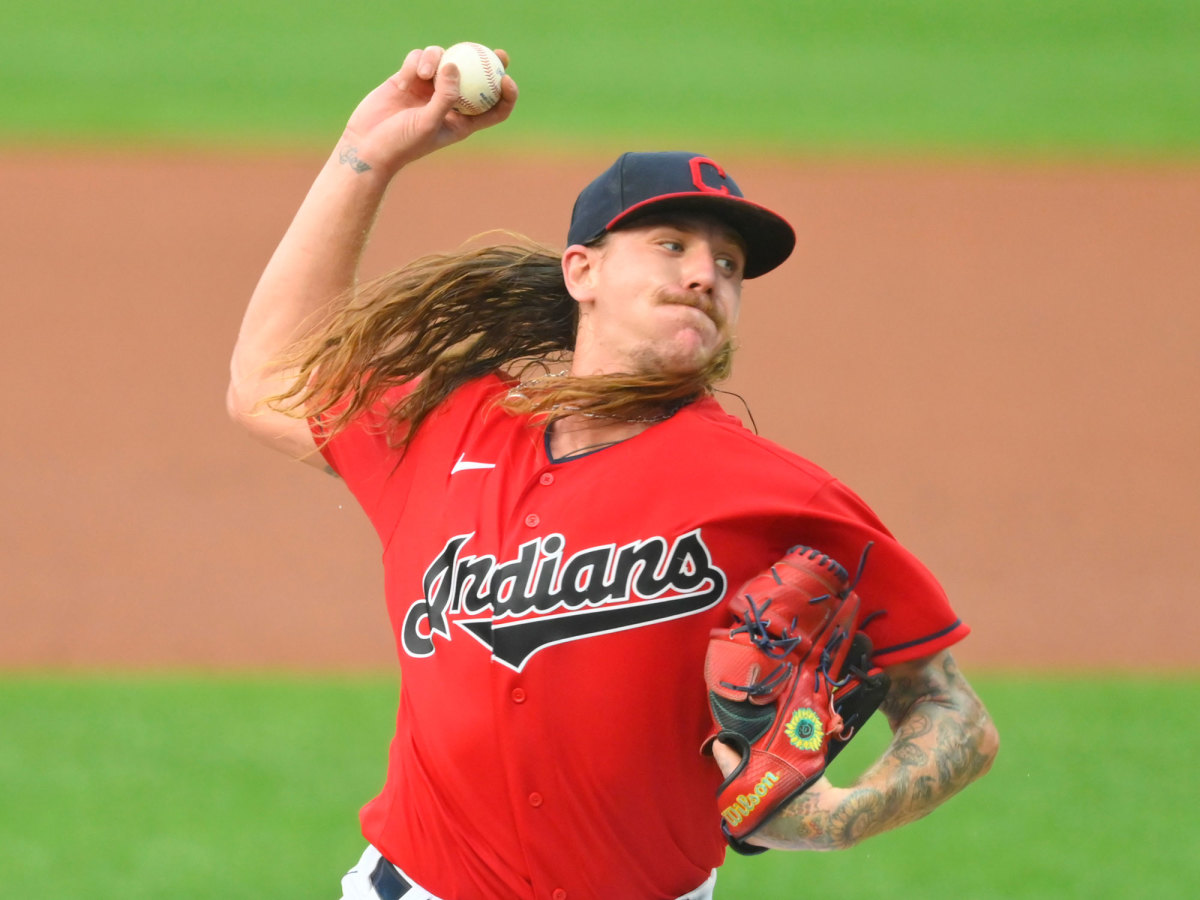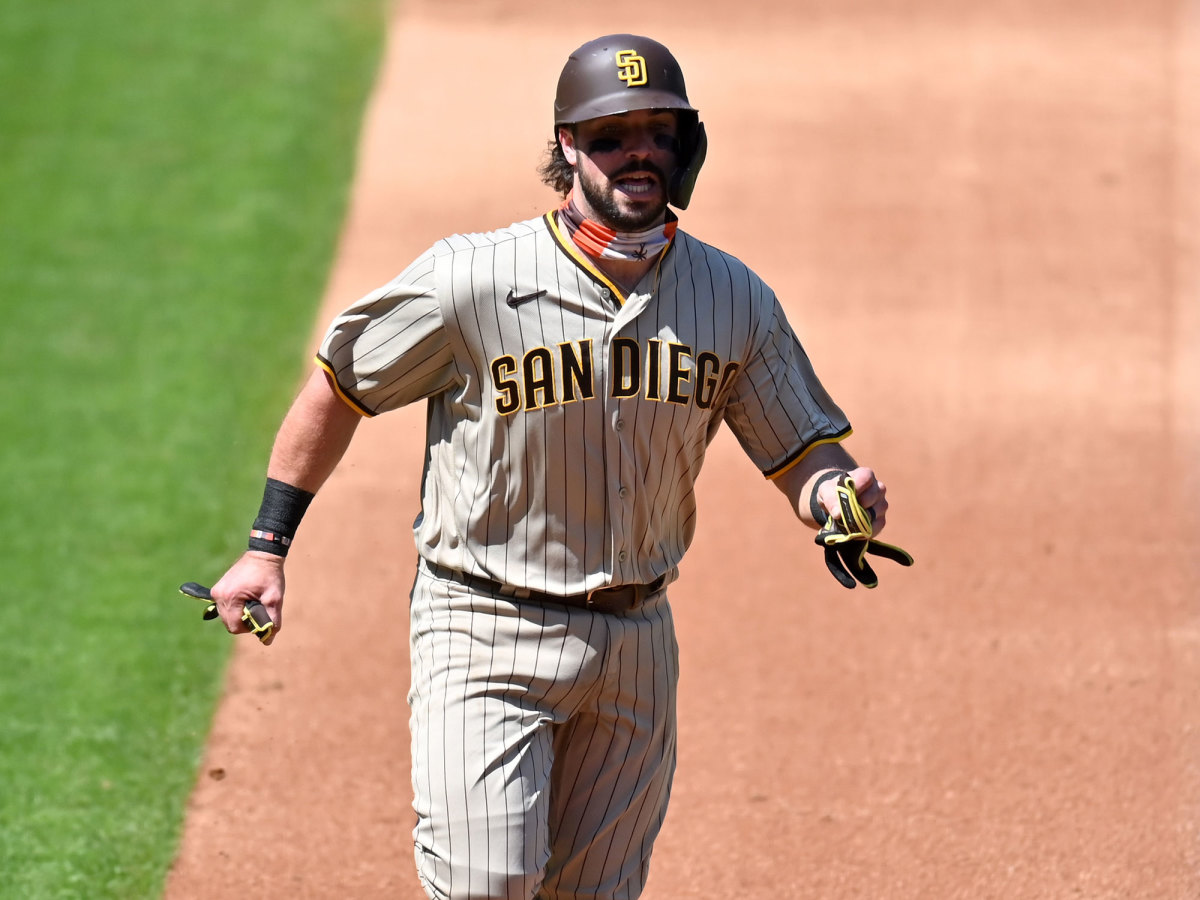Mike Clevinger Trade a Win for Padres and Indians
As if the Padres hadn't done enough over the last three days, they struck gold Monday morning when they agreed to a nine-player deal with the Indians that netted them right-handed pitcher Mike Clevinger, arguably the best available starter at this year's trade deadline. But this is far from a one-sided trade in San Diego's favor. Let's break it down.
The Deal
Padres acquire: RHP Mike Clevinger, OF Greg Allen and a PTBNL from Indians
Indians acquire: RHP Chad Quantrill, C Austin Hedges, 1B/OF/DH Josh Naylor, SS Greg Arias, INF Owen Miller and LHP Joey Cantillo from Padres
Full trade details per ESPN's Jeff Passan, among other reports.
Grading San Diego's Side of the Deal
This is A.J. Preller's "Apocalypse Now," the trade that caps off all that he's worked for as San Diego's general manager since arriving in August 2014. Swindling Fernando Tatis Jr. from the White Sox was the "Godfather" for baseball's Francis Ford Coppola, and the Manny Machado deal was his "Godfather Part II." But getting Mike Clevinger is the epic masterpiece that cements the Padres as the best team in the National League. The Dodgers, of course, still have a claim as the top team, but the fact that this is even up for debate says something about Preller's deadline.
In less than 72 hours, the Padres addressed all of their weaknesses: relief pitching (Trevor Rosenthal), catcher (Jason Castro, Austin Nola) and starting pitching, with Clevinger. Before Monday's blockbuster, San Diego's rotation looked something like this:
1. RHP Chris Paddack (99 ERA+)
2. RHP Zach Davies (168 ERA+)
3. RHP Dinelson Lamet (187 ERA+)
4. RHP Garrett Richards (85 ERA+)
5. Opener
Just slide Clevinger, the No. 1 pitcher on most teams (though not Cleveland—more on this later), in for the opener, and the rotation looks something like this:
1. Clevinger (147 ERA+)
2. Lamet
3. Paddack
4. Davies
5. Richards, who would move to the bullpen in the four-man postseason rotation
This rotation, along with the electric Slam Diego lineup and improved bullpen, can rival any team in baseball.
Some may knock Preller for unloading his farm system—three of the players the Padres sent to Cleveland were ranked among their top 15 prospects, according to MLB.com)—but this is the very reason he loaded up on elite minor leaguers in trades following the failed 2014-15 "Prellerpalooza" offseason. Some of those top prospects would develop into a young core of Friars, while others would be used to acquire top major-league talent when the team was ready to contend for a title. This is exactly why rebuilding clubs hoard prospects.

It's worth noting here what the Padres could have done if they didn't get Clevinger. The Athletic's Ken Rosenthal reported that San Diego also tried to get both right-hander Lance Lynn and slugger Joey Gallo from the Rangers. It's fun to imagine Gallo in a lineup with Tatis, Machado and the rest along with Lynn atop the rotation, but getting Clevinger was the better fit. Clevinger is under contract through the 2022 season, one more year than Lynn. Clevinger, 29, is four years younger than Lynn, and the Padres probably would have had to give up more to get the two Texas stars.
Take a bow, A.J. Coppola. You've not only built the first Padres playoff team since 2006; you've created a World Series front-runner.
Grade A
Grading Cleveland's Side of the Deal
Don't sleep on Cleveland. This is the right move for the Indians, too. They are once again in the thick of a pennant chase, with an elite starting rotation leading the way. So why did they deal their second-best starter? Because they have silenced opposing hitters without needing Clevinger, who has made just four starts this season due to his team-issued timeout.
Cleveland traded a strength to address a few weaknesses. Josh Naylor, a 23-year-old former first-round draft pick, can play the outfield and first base and should provide some lefty pop to a lineup that has underperformed so far this season. Naylor didn't get regular at-bats in the San Diego lineup, but he should see plenty of action in Cleveland against right-handers. The Indians have the worst outfield OPS (.572) in the American League; Naylor has a .732 OPS.
Catcher Austin Hedges, one of the best defensive backstops in the game, has never developed as a hitter like the Padres would have hoped, but his 67 OPS+ this season is actually better than that of both Indians catchers, Roberto Perez (24 OPS+) and Sandy Leon (46 OPS+). All three are having poor offensive seasons, but Hedges is the best hitter of the three defense-first catchers.
Right-hander Cal Quantrill has been quite good in relief for San Diego this year, posting a 171 ERA+ in 17 1/3 innings (10 games), and will add some depth to the dependable Cleveland bullpen.

As for the three prospects, the one that jumps out is shortstop Gabriel Arias, who MLB.com ranked seventh in the San Diego system. If the Indians have to let Francisco Lindor walk as a free agent after next season, Arias could be their shortstop of the future.
This feels like what Cleveland did at last year's deadline when it traded Trevor Bauer to the Reds (a three-team deal that also included San Diego). Both Bauer and Clevinger carry some baggage, but don't read too much into their blemishes. The Indians dealt both pitchers because they could afford to do so and not lose much due to the strength of their rotation.
We won't know if this trade truly is a win-win until we see how the Cleveland prospects fare when they become big leaguers. But, even if this isn't as even a deal as an Aroldis Chapman-for-Gleyber Torres type of swap, Cleveland is still playoff caliber in 2020 without Clevinger. And due to their deep rotation, the Indians will be a scary matchup for any of the great American League lineups come October.
Grade A-
